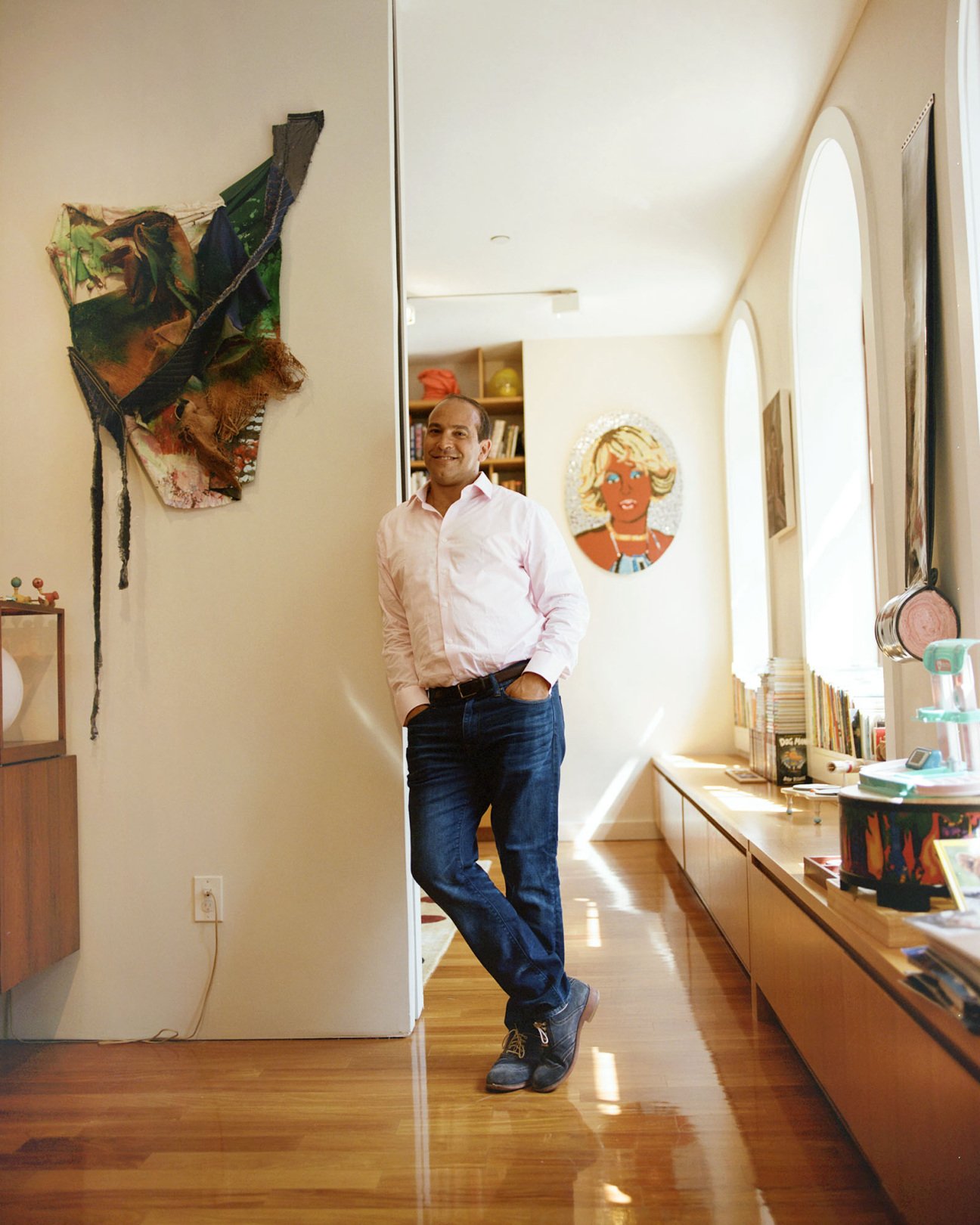
At home in New York, Bernard Lumpkin and Carmine Boccuzzi are surrounded by works from Rashid Johnson, Jonathan Lyndon Chase, Kerry James Marshall, and Derrick Adams, to name a few. When decorating their child’s room, the couple chose to mount a Christina Quarles painting above the crib. Their collection, built around a core of rising Black artists, is currently on tour in the “Young, Gifted, and Black” exhibition, co-curated by Antwaun Sargent and Matt Wycoff, touching down at the Rhodes College Clough-Hanson Gallery in Memphis, Tennessee, on Sep. 8. Most recently, the pair, who met while studying at Yale University, announced that they would be endowing an annual scholarship at the institution's School of Art, in their friend and fellow Yale alum Mickalene Thomas's name. Here, Lumpkin offers insight into living and working in the arts, and defines what it means to be a patron in the field.
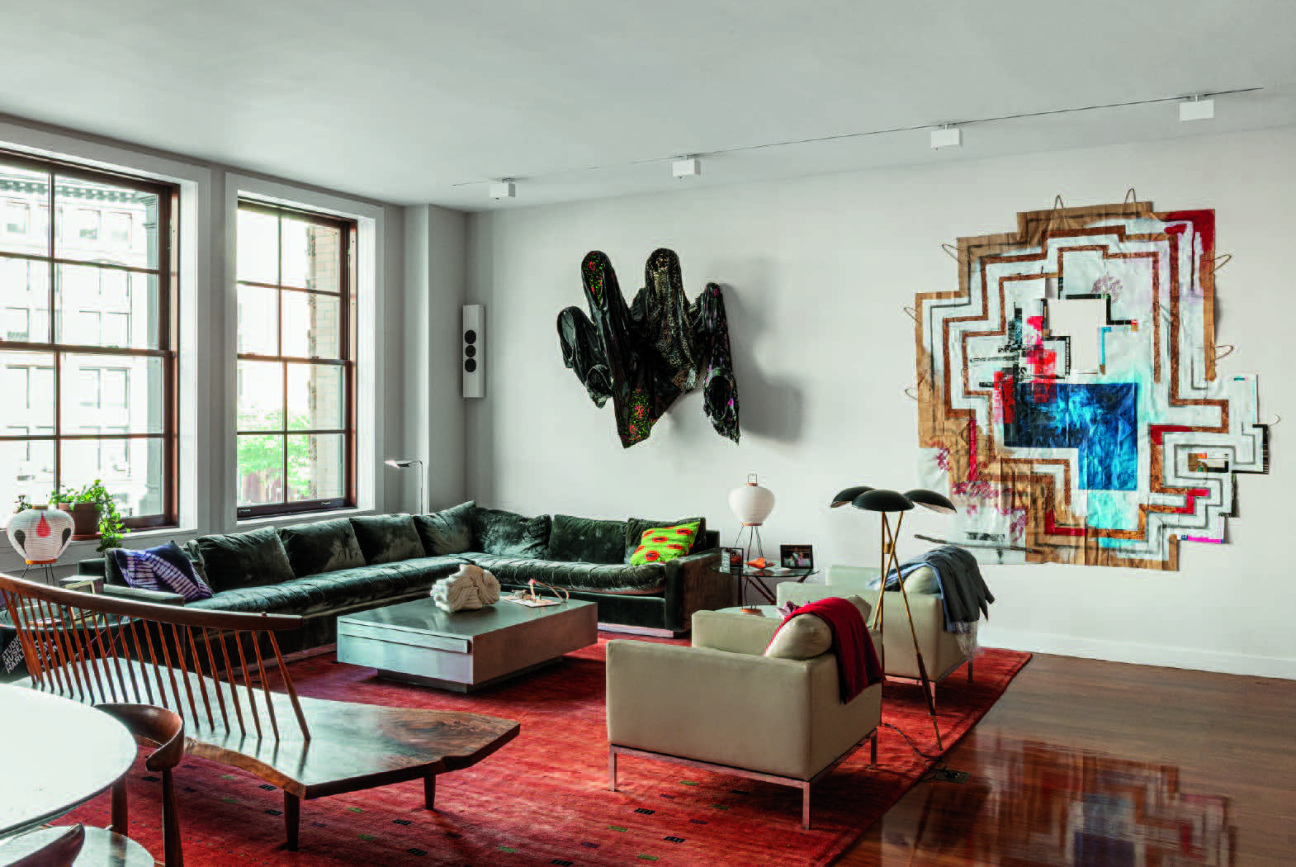
Where did your personal collection begin?
As a collector and patron, I learned a lot from watching, looking at other people and how they built their collections. The collections that resonated with me the most were ones that had a story to tell—a story about the collector, their own life, or their perspective and on contemporary art. When collectors ask, "How do you build a collection that has meaning and feels purposeful?" I always say, “Look within yourself. Think about your own life, think about your values, think about your family, and then look at the art and the artists that you're passionate about. See if there's a way to tell a story with your collection that resonates with you as a person.”
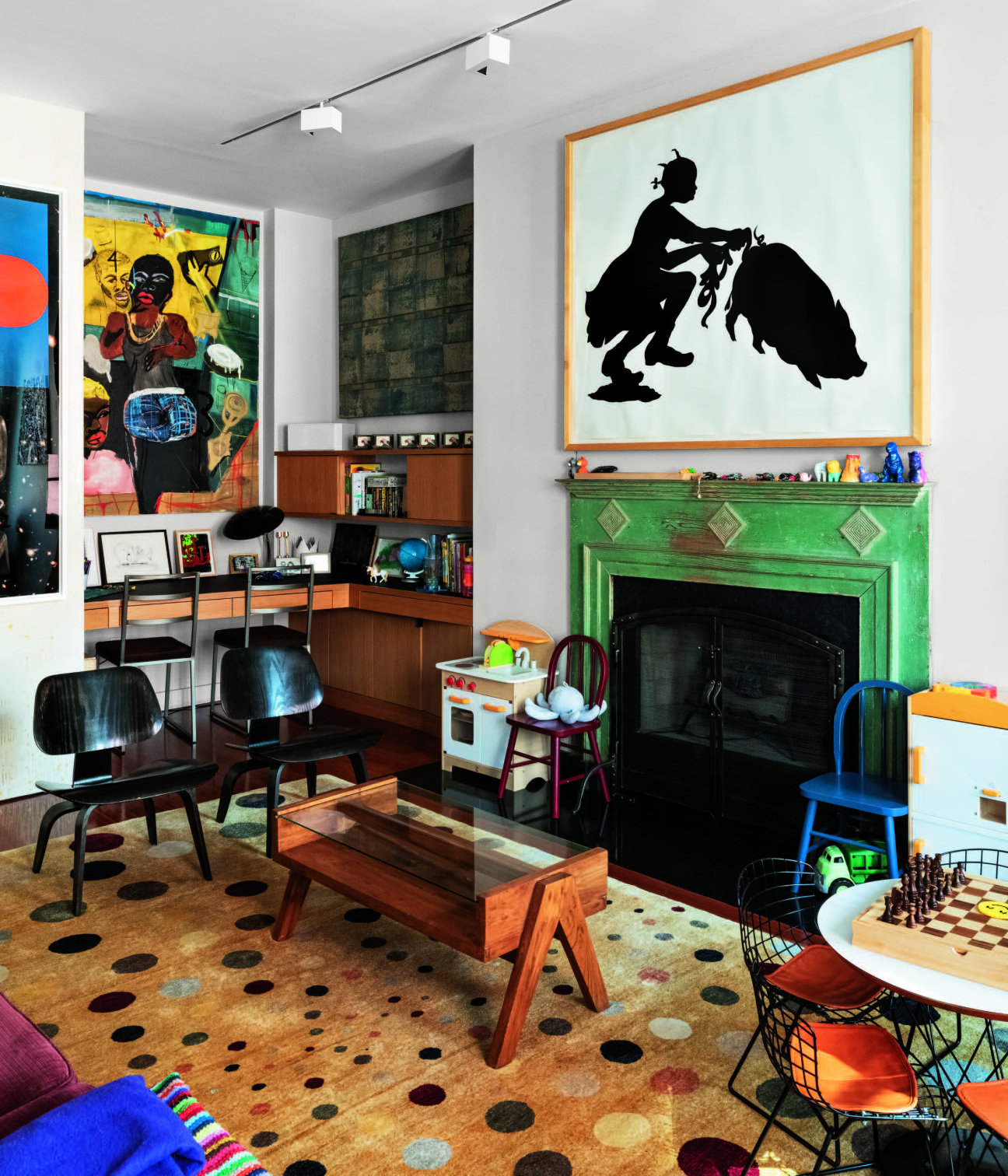
How did you develop the character or the theme in your own collection?
It's called the Lumpkin-Boccuzzi Family Collection; I think the operative word there is family. Through the artists of African descent that I have been privileged to support and to be in dialogue with, I have been able to tell a story about my own family, what it means to be Black growing up in America, a story about nationhood, about race, about roots, and also a story about what it means to be a young and emerging artist who is forging a path that's mindful and respectful of your predecessors, but also a path that is not afraid to take risks. The roots have to do with my own experience growing up in a mixed race and ethnic family, and with my experience working with other young artists when I worked at MTV for many years. Television was a very collaborative and creative medium. Because of that experience, I wanted to start working with artists in a meaningful way. I had a desire to tell stories about the world that weren't being told well enough or loudly enough.
Do you remember the first piece you ever bought?
I don’t necessarily remember the first piece. The piece that I’m always most excited about or that’s first in my memory is the one I acquired most recently. The first artists I collected in depth, which for me is the distinction between a collector and a patron. In that case, I would think of artists like Wardell Milan, Jonathan Lyndon Chase, Henry Taylor, Jordan Casteel, Christina Quarles, Jennifer Packer, and Kathia St. Hilaire.
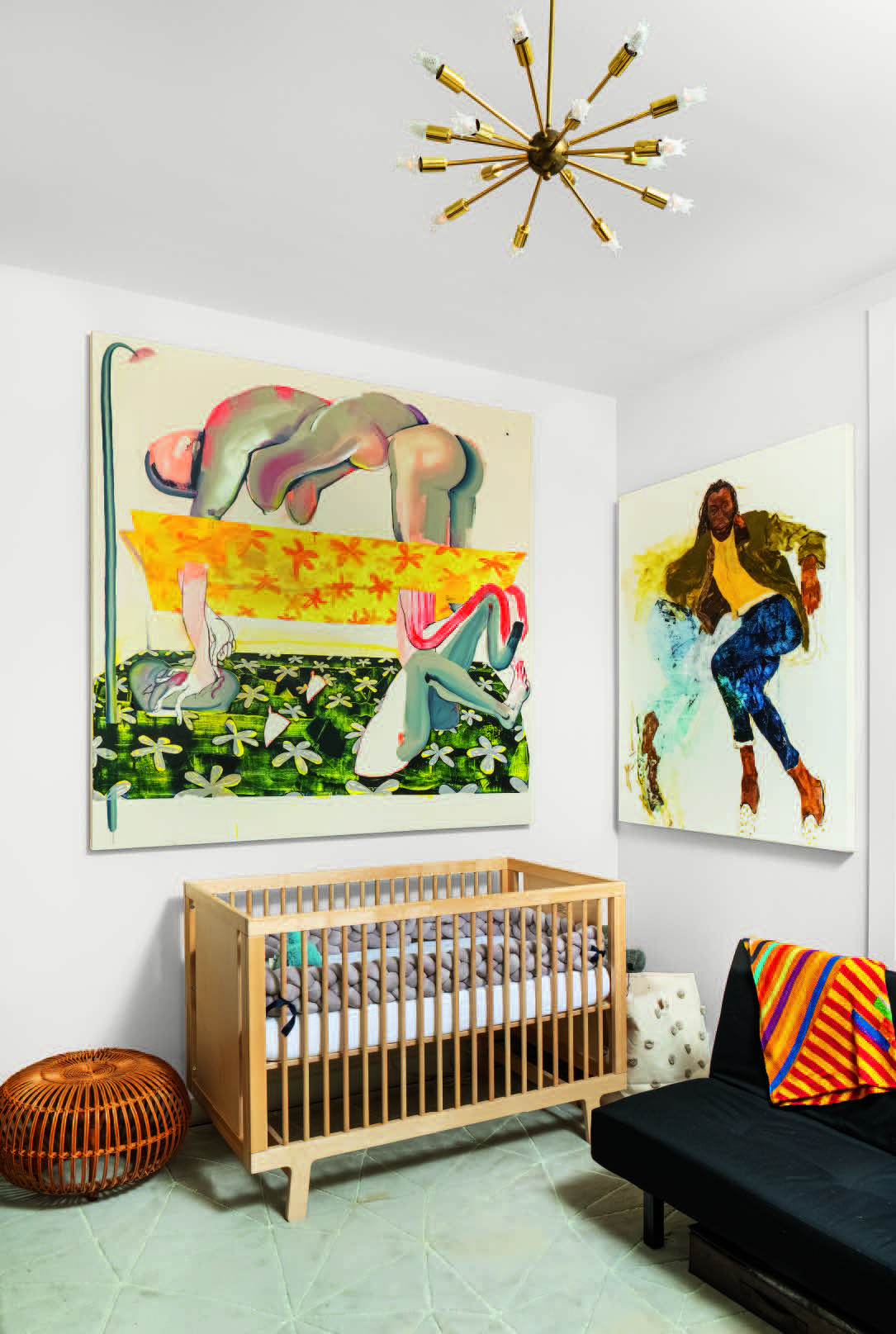
How would you say being a patron and developing a relationship with an artist changes the nature of a collection or changes the way you acquire works?
The collection for me is an educational tool. I use an artist's work to tell my children a story. My children are in elementary school, and they talk about the “responsive classroom.” A responsive classroom is a classroom that's responding to not only the curriculum, but also events that are happening in the world or in the school community at large. It made me ask myself, how can I be a responsive collector? There are many ways in which a collector can help an artist, and that's really where collecting ends and patronage begins. The joy, the challenge, and the fun, is being a connector more than a collector—helping artists in different ways, not just acquiring their work. You can help build a community around an artist's work: you can invite them to your home to give a talk about their work, you can support their application for a residency, or you can connect them with a curator, or introduce them to other artists and collectors.
Are there any recent discoveries? Anyone in particular that you're excited about who's coming up right now?
It's that time in the summer when you start to receive invitations to openings for all the big fall shows. The first couple of weeks of September will be full of really great exhibitions: Chase Hall at David Kordansky in New York; at the institutional level, there's Ed Ruscha at MoMA; the Whitney has an amazing exhibition curated by Rujeko Hockley called "Inheritance"; Artists Space has Jonathan Lyndon Chase.
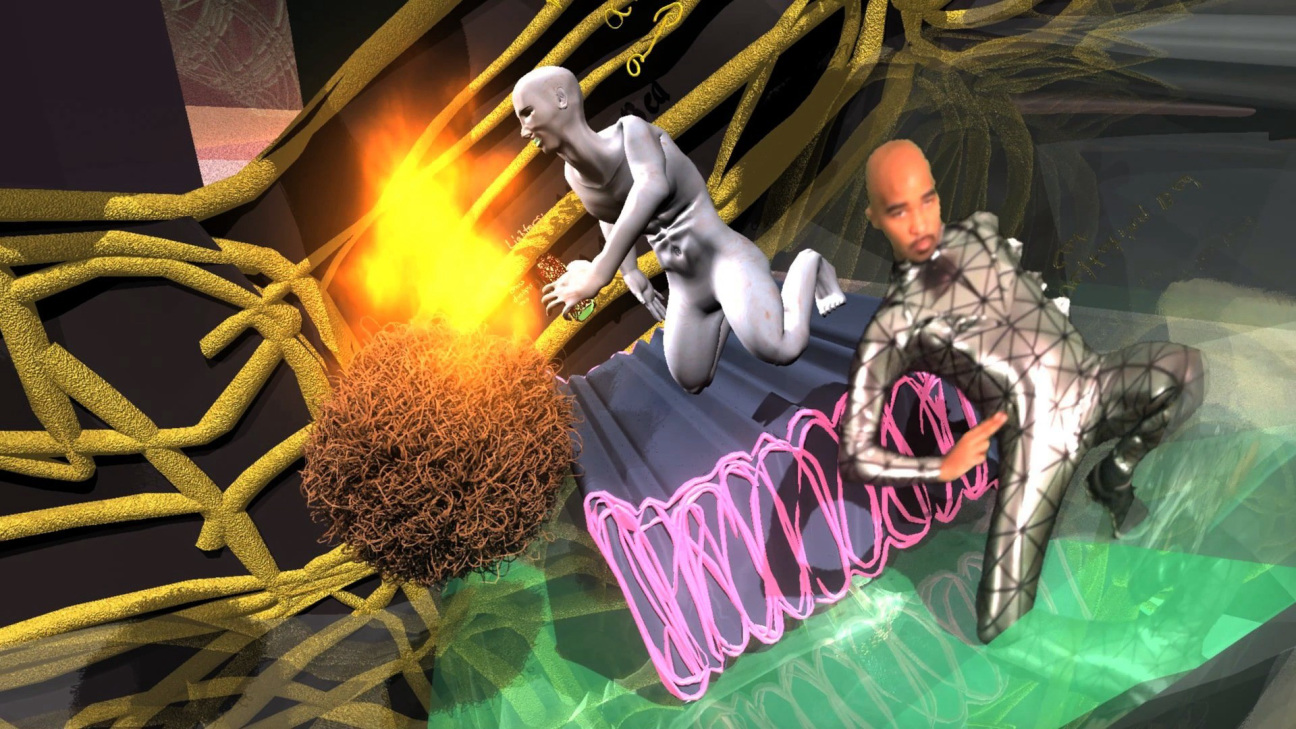
Are there any pieces in your collection that people are most drawn to?
[Jacolby Satterwhite's video work "Reifying Desire 5"] is part of the "Young, Gifted, and Black" traveling exhibition. We partner with mostly college and university galleries. Again this gets back to the educational part of what I do, and continuing my own family inheritance. There are many teachers in my family. One of the most popular works in the show is Jacolby’s video. Jacolby was and is ahead of his time in so many ways: in terms of digital technology, and combining it with gender, performance, storytelling, drawing. But I think what makes it exciting for young people is that it's a medium they're very familiar with and feels very accessible.
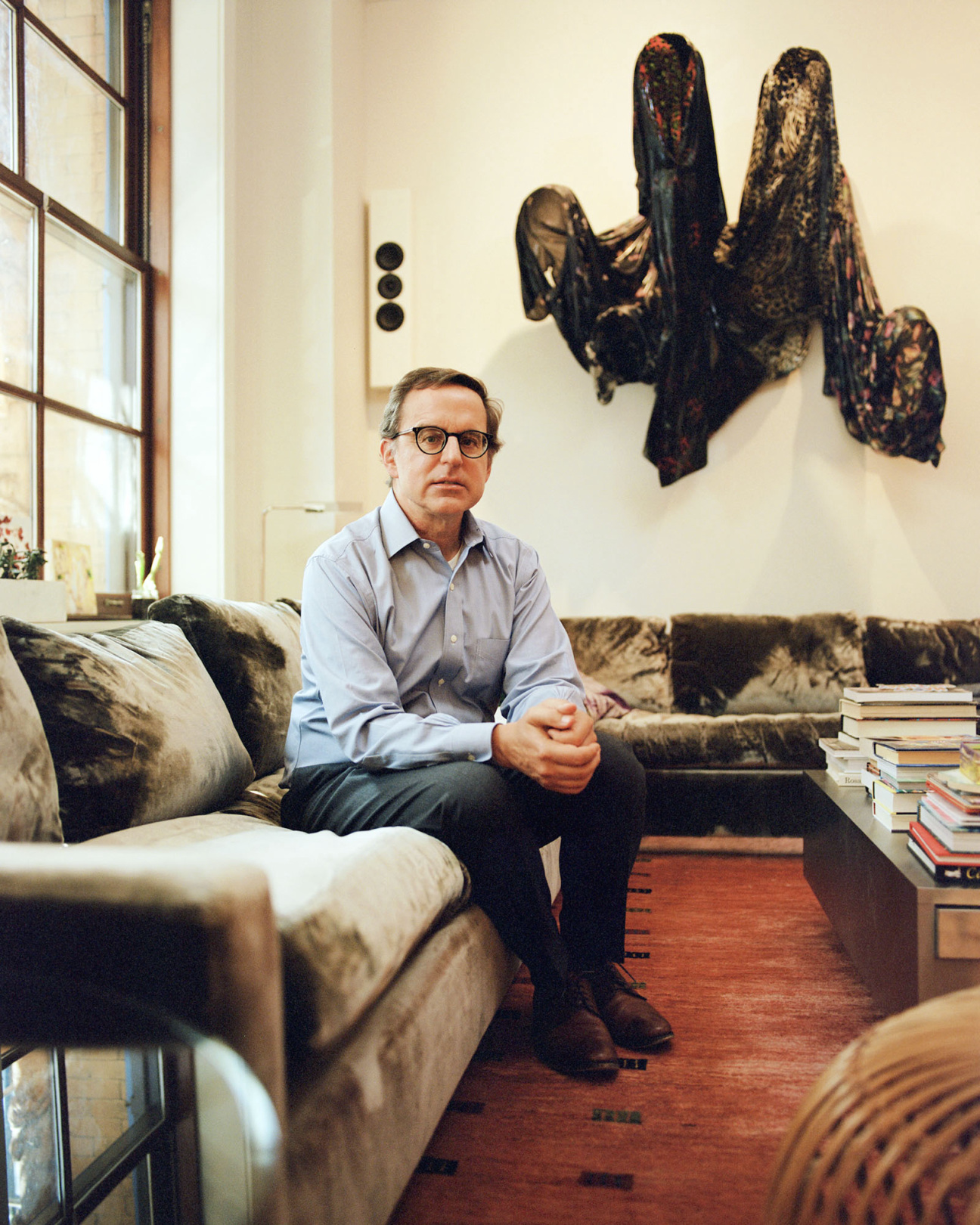
In the house, maybe the Kevin Beasley? It’s a work that consists of folded, draped clothing. A lot of Kevin's work deals with clothing—whether his own or family members' clothing. This one was made by dipping his grandmother's dresses in a resin and hanging them over a rounded mold. It's a very delicate process. One of the things that I always try to remember to tell collectors is that if you're scared to bring something into your home, then that might be a good sign because it means that you're pushing yourself, you're challenging yourself. And if you have kids in the home, as we do, that's an added layer of excitement. This work hangs on the wall, it sticks out from the wall—it looks like the dementors from Harry Potter. That's what my children see it as. It's about to be on loan to an amazing exhibition at the Guggenheim, “Going Dark.”
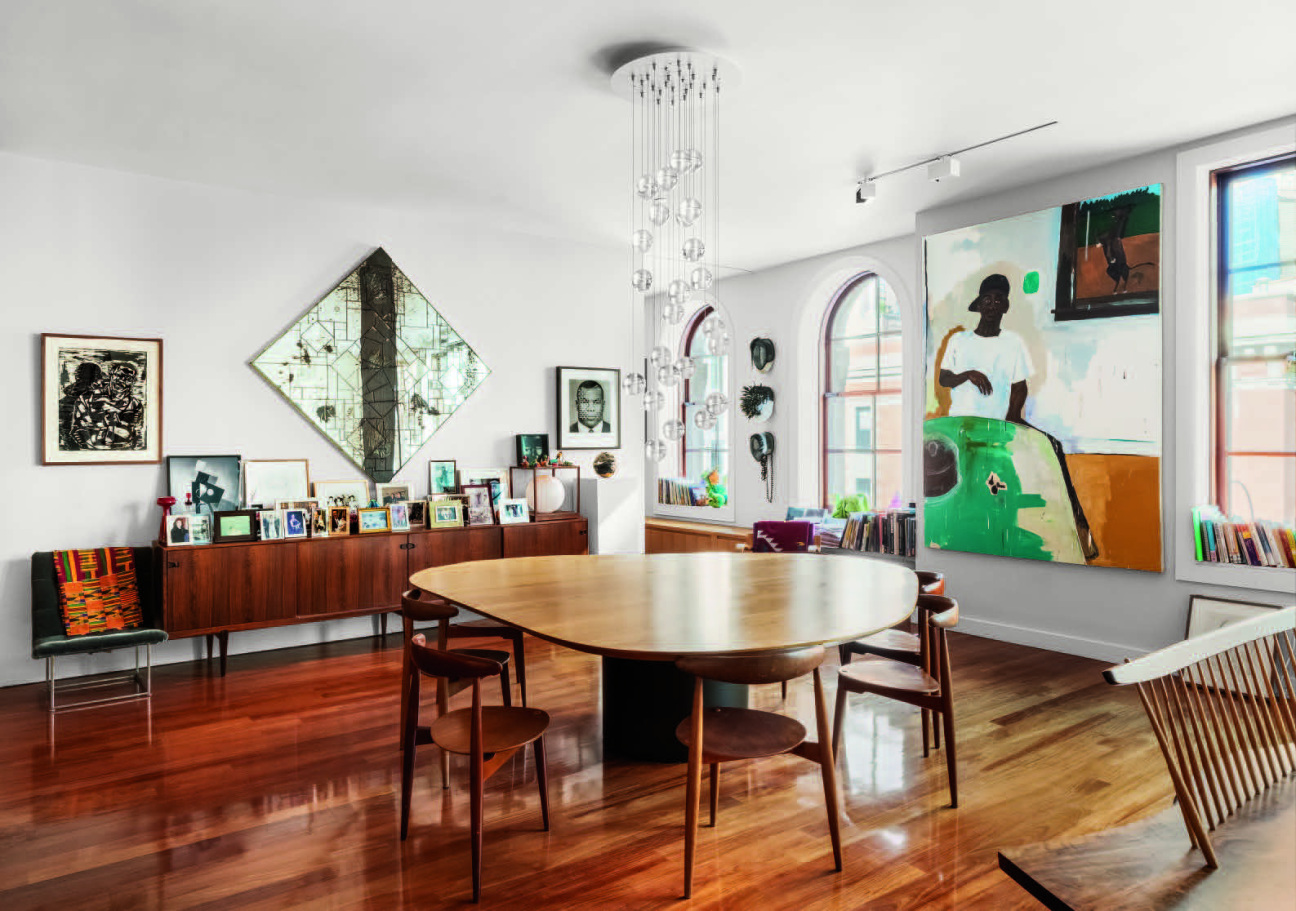
Which piece in the collection was most challenging to acquire?
We have a very heavy work by Rashid Johnson. It's a black wax and mirror piece that's shaped like a diamond, and it hangs on a central wall which we added when we moved into the apartment to hang art. We reinforced that wall specifically for this piece. I will go to great lengths, and that can take the form of finding creative ways to bring an oversized or too heavy work into the apartment safely. There are two works that had to be taken up to the apartment on top of the elevator.










 in your life?
in your life?

